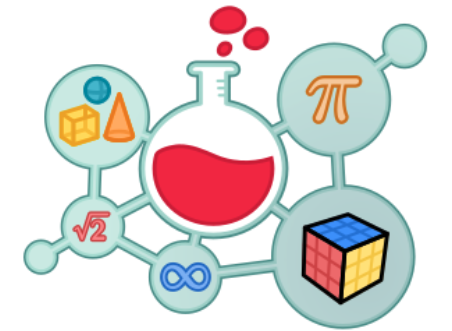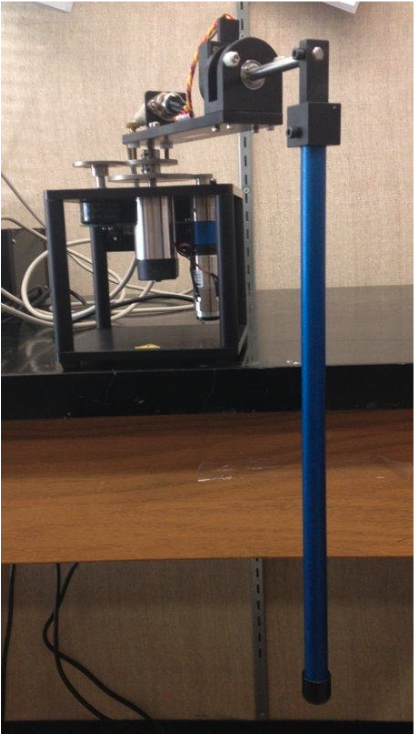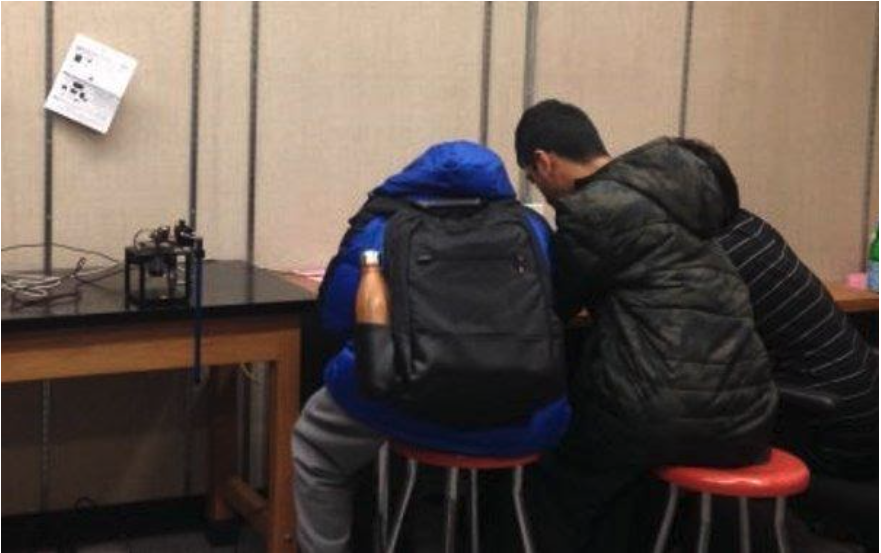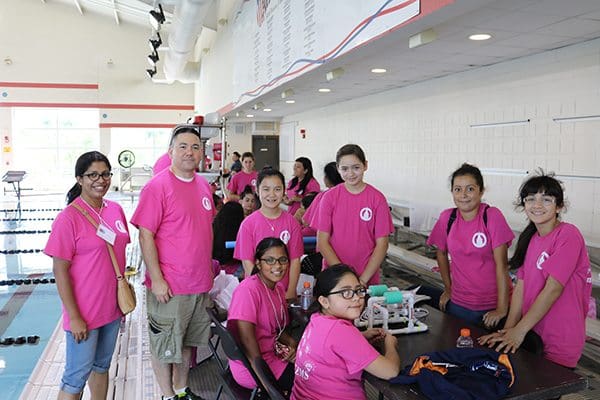

This article was written by Prof. Amenda Chow from the Department of Mathematics and Statistics at York University. it was originally published in the FYMSiC Newsletter 9th Ed. February 2022. Republished here with the author’s consent.
What is an Experimental Math Space?
In science courses like biology, physics and chemistry, there is often a laboratory component that accompanies the lecture portion of the course.
This is not common in mathematics, and an experimental math space can fill this gap. Such a space is a physical laboratory in which equipment in the room are for students to conduct experiments related to the concepts learned in their mathematics courses.
An Example of a Math Inspired Experiment
 This picture shows a pendulum placed on a rotatory base. There is a motor in this base. The pendulum and base are connected to a computer, which can be operated via MATLAB and Simulink. One objective is to invert the pendulum so that it is upright. This would require students to understand the physical components of the pendulum equipment, how to use Simulink to operate the system, and the equations of motion that model the dynamics of the pendulum. Simulink is also able to measure such parameters as the pendulum angle over time, and as part of the analysis, students can generate corresponding graphs and interpret their meaning.
This picture shows a pendulum placed on a rotatory base. There is a motor in this base. The pendulum and base are connected to a computer, which can be operated via MATLAB and Simulink. One objective is to invert the pendulum so that it is upright. This would require students to understand the physical components of the pendulum equipment, how to use Simulink to operate the system, and the equations of motion that model the dynamics of the pendulum. Simulink is also able to measure such parameters as the pendulum angle over time, and as part of the analysis, students can generate corresponding graphs and interpret their meaning.
Consequently, this inverted pendulum experiment can be used in various ways for different levels of math courses like introductory calculus, or for more advanced courses like math modelling, differential equations or control theory

This rotary inverted pendulum system was designed by Quanser. They are a Canadian company that focuses on engineering platforms for education. Interestingly, when I showed a kinesiology professor the pendulum experiment, he was reminded of his own research in helping patients with neurological diseases, like Parkinson, balance themselves while walking. This had never occurred to me, and I was really struck by how far reaching and inspiring experiments can be.
Benefits to Students
Having students conduct experiments in a mathematics course helps to develop such skills as:
- working in teams and developing their oral communication skills,
- learning how to connect software and programming with mathematical concepts,
- modelling real world systems using mathematics
- writing technical reports,
- interpreting and visualizing experimental data, and
- designing experiments, which reinforces concepts related to mathematical reasoning.
Pivoting Experiments to an Online Environment
Like many things pre-pandemic, experimental math spaces were designed for in-person. The following are some ideas that have emerged due to the necessity of an online lab format:
- Using found objects at home instead of campus lab equipment. Here is a non-math example, which I found to be quite creative and fun. In a nursing course at York University, which have labs involving expensive mannequins to teach about the human anatomy, to accommodate for the online environment, students were asked to find an old plain t-shirt at home and draw the human anatomy on it.
- Quanser has developed a virtual lab software platform which provides an online alternative to their physical experiments.
- Making lab videos; that is, one person goes into the lab and makes a detailed and thorough video of the experiment. The video is given to students in lieu of them going into the lab directly.
Over the last few years, I have been collecting mathematically inspired experiments and equipment in an effort to further develop experiential learning in mathematics courses. I have also learned about the different types of experimental math spaces presently in use at various Canadian universities. I have put everything I have gathered so far here.


